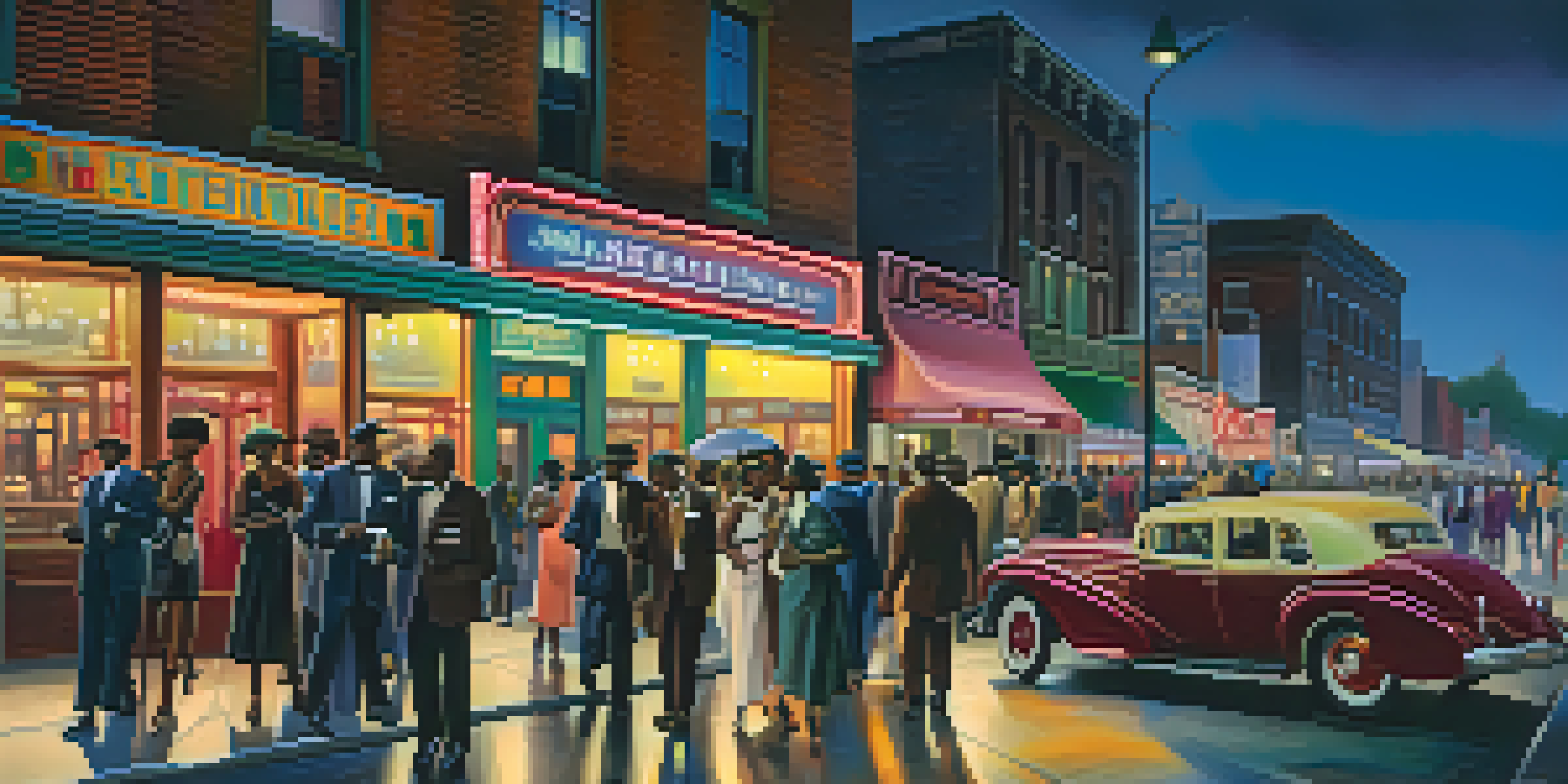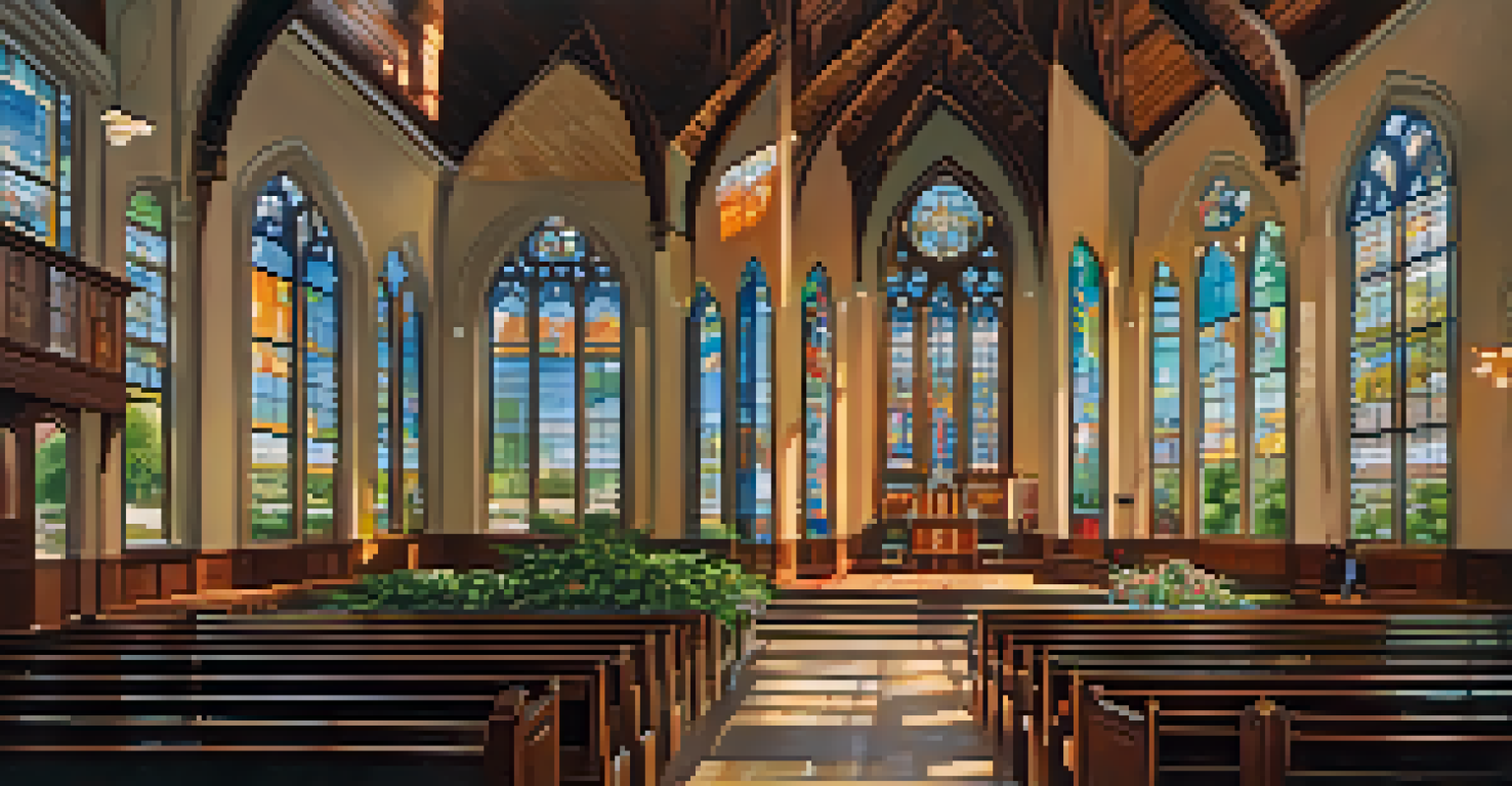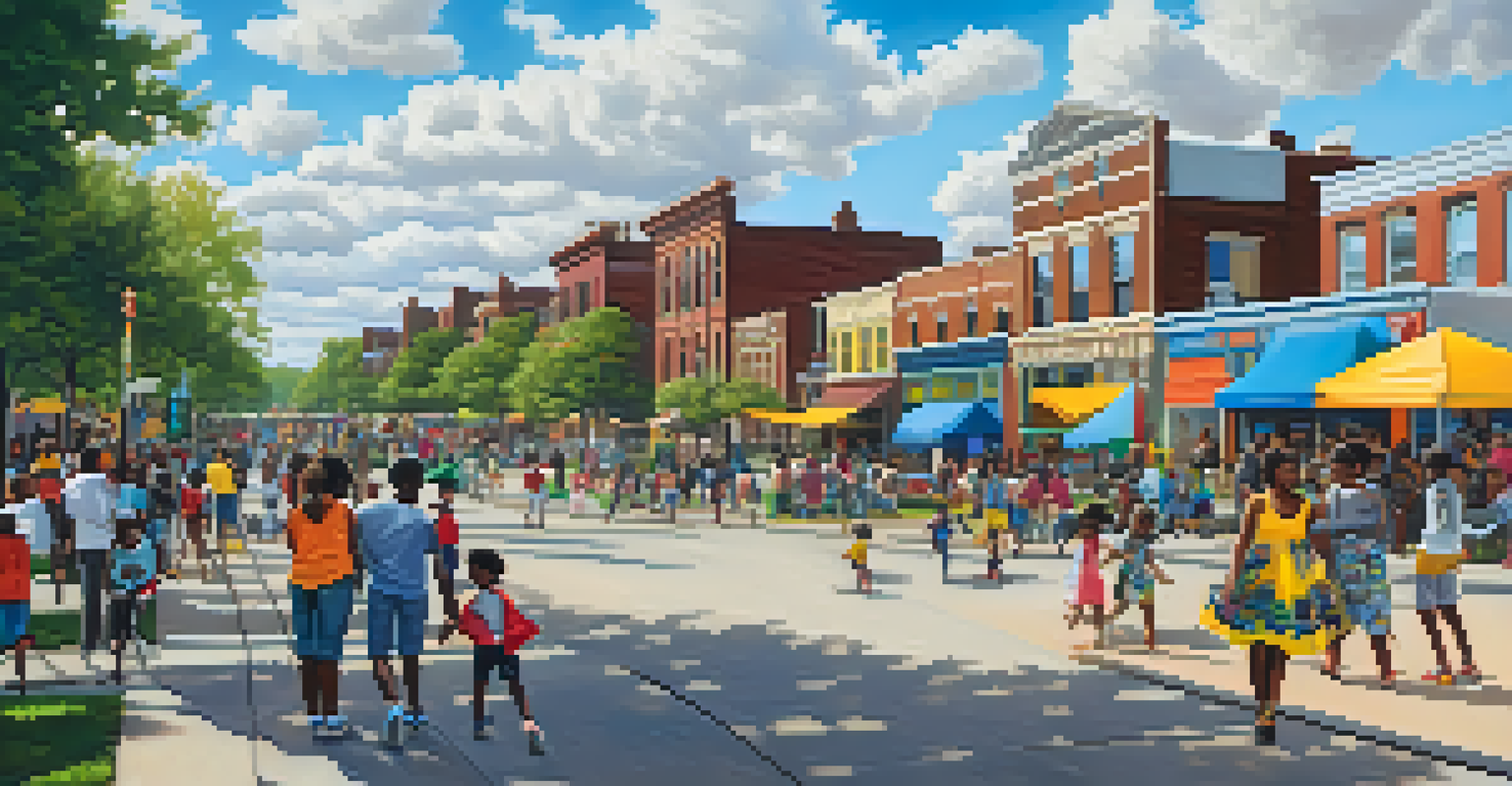The Historic Significance of Bronzeville in Chicago

The Origins of Bronzeville: A Cultural Haven
Bronzeville, often referred to as the 'Black Metropolis,' emerged in the early 20th century as a vibrant community for African Americans. This area became a refuge for those fleeing the South during the Great Migration, offering a sense of belonging and opportunity. The name 'Bronzeville' was coined to reflect the pride and resilience of its residents, symbolizing their rich cultural heritage.
The Great Migration was not just about moving from one place to another; it was about finding dignity, respect, and a place to thrive.
As families settled in, they established businesses, schools, and churches that became the backbone of the community. This grassroots development fostered a supportive environment where art, music, and culture thrived. The neighborhood was a melting pot of creativity, giving rise to influential figures in literature, music, and politics.
Today, the legacy of Bronzeville's origins continues to resonate, reminding us of the importance of community in shaping identity. The stories of those early residents still echo through the streets, inspiring new generations to value their heritage and contributions.
Bronzeville's Role in the Great Migration
The Great Migration marked a pivotal chapter in American history, as millions of African Americans moved north in search of better opportunities. Bronzeville became a focal point of this movement, attracting individuals eager to escape the oppressive conditions of the Jim Crow South. This influx transformed the area into a bustling hub of economic and cultural activity.

As newcomers arrived, they brought with them diverse skills and traditions, enriching the fabric of Bronzeville. The creation of numerous businesses, from barbershops to jazz clubs, not only provided jobs but also fostered a sense of community. This thriving economic environment laid the groundwork for a unique cultural identity that still influences Chicago today.
Bronzeville's Rich Cultural Heritage
Bronzeville emerged as a vibrant community during the Great Migration, fostering a unique cultural identity through art, music, and grassroots development.
The legacy of the Great Migration is palpable in Bronzeville, where stories of struggle and triumph are interwoven into the community’s history. It serves as a testament to the resilience and determination of those who sought a better life.
Cultural Renaissance: Art and Music in Bronzeville
During the 1920s and 1930s, Bronzeville blossomed into an epicenter of African American culture, particularly in the realms of art and music. The neighborhood was home to renowned jazz and blues clubs, where legends like Louis Armstrong and Muddy Waters performed. This rich musical heritage not only entertained but also provided a platform for social commentary and expression.
Art is the most beautiful of all lies; it is a means of communication, and it is one of the most effective ways to bring about social change.
Artistic expression flourished, with local galleries and theaters showcasing the talents of Black artists and playwrights. The Bronzeville community nurtured creativity, leading to the development of influential art movements that celebrated African American identity. This cultural renaissance played a crucial role in shaping the broader narrative of American art and music.
Today, the echoes of this vibrant past can still be felt in Bronzeville. The neighborhood continues to celebrate its artistic legacy, hosting events and festivals that honor its rich history while inspiring new generations of artists.
Historic Landmarks: Symbols of Resilience
Bronzeville is dotted with historic landmarks that tell the story of its resilient community. One notable site is the Abundant Life Church, a cornerstone of spiritual life that has served the community for decades. These landmarks not only provide a glimpse into the past but also serve as symbols of hope and perseverance for current and future residents.
Another significant site is the former home of the famed poet Gwendolyn Brooks, who used her voice to advocate for the community. Her legacy reminds us of the power of art in effecting change and raising awareness about social issues. These historic sites are anchors in the neighborhood, connecting past, present, and future.
Historic Landmarks Reflect Resilience
The neighborhood's historic landmarks, like the Abundant Life Church and Gwendolyn Brooks' home, symbolize the community's perseverance and contributions to society.
Preserving these landmarks is essential for honoring the contributions of those who came before us. They serve as a reminder of the struggles faced and the achievements celebrated within the Bronzeville community.
Bronzeville's Influence on Civil Rights Movements
Bronzeville played a crucial role in the civil rights movement, serving as a backdrop for activism and advocacy. The community was home to influential leaders who fought tirelessly for social justice and equality. Organizations such as the Chicago Urban League were established to address the systemic issues faced by African Americans, making Bronzeville a hub of civil rights activism.
The neighborhood also hosted significant events that galvanized public support for change, including rallies and marches. This activism not only impacted local issues but also contributed to the national dialogue on civil rights. Bronzeville became a microcosm of the larger struggle for equality in America.
Today, the spirit of activism continues in Bronzeville, with community organizations working to address ongoing social issues. The legacy of those who fought for civil rights remains a guiding force in the community’s efforts for justice and equality.
Modern Bronzeville: A Blend of Old and New
As times have changed, so has Bronzeville, evolving into a neighborhood that blends its rich history with modern developments. New businesses and cultural initiatives have sprung up, attracting a diverse population while honoring the community's heritage. This transformation reflects a broader trend of revitalization seen in many historically significant areas.
However, this growth comes with challenges, including gentrification and the risk of losing the unique character that defines Bronzeville. Residents and local leaders are actively engaged in conversations about preserving the community's identity while embracing new opportunities. Finding this balance is crucial for maintaining the spirit of Bronzeville.
Future Focus on Community Engagement
As Bronzeville evolves, community leaders emphasize the importance of preserving its identity while engaging younger generations in cultural and economic initiatives.
Today, Bronzeville stands as a testament to resilience, demonstrating how a community can evolve while honoring its past. The ongoing dialogue around development and preservation highlights the importance of community involvement in shaping the neighborhood's future.
The Future of Bronzeville: Community and Legacy
Looking ahead, the future of Bronzeville is filled with potential and promise. Community leaders and residents are dedicated to ensuring that the legacy of their ancestors is preserved for future generations. Programs focused on education, economic development, and cultural preservation are vital for maintaining the neighborhood's unique identity.
Engaging the younger generation is essential for keeping the spirit of Bronzeville alive. Initiatives that promote local history and culture foster a sense of pride and belonging among residents. By empowering young people to take an active role in their community, Bronzeville can continue to thrive.

In essence, the future of Bronzeville hinges on collaboration and commitment. By working together, the community can preserve its rich history while embracing change, ensuring that Bronzeville remains a vibrant and essential part of Chicago's cultural landscape.